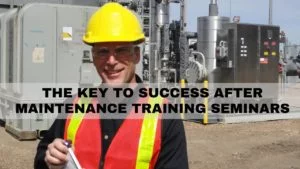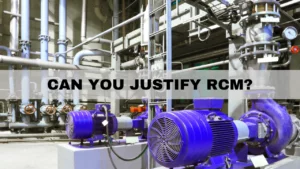A very important part of a cost-effective preventive maintenance program is what I call the route-based activity.
These are activities that are easiest to do, and to administer, if they are presented in a list. This list can be presented in electronic format or in a paper format and includes such activities as lubrication and inspections by maintenance craftspeople and equipment operators.
There are two major things that surprise me regarding these basic preventive maintenance activities:
- With the very good return on investment (ROI) you get from these programs, I am surprised at how many plants lack these programs or perform them very poorly.
- All major computerized maintenance management systems (CMMS) lack the capability to administer these routes in an efficient manner.
RETURN ON INVESTMENT.
We use cost avoidance analysis as a tool to measure the return on investment (ROI) from route-based activity programs (exclusive of lubrication). In the last year we have verified the ROI to be between five to 10 times the initial investment and, after that, 10 to 30 times the cost to run the program. Even if such a good ROI can be verified, the inspection program is very poor in most plants and, if one exists, it is not executed with the highest priority.
Computerized Maintenance Management Systems (CMMS)
SHORTCOMINGS of CMMS.
All CMMS providers we talk with say their systems can produce inspection lists to support inspection and lubrication routes. We must understand that, in the computer world, the answer is always, “Yes, our system can do that.” It is never “no.”
The dilemma is that the CMMS provider does not think in terms of route-based activities at all. Their systems are driven by work orders. If each inspection is given a work order number, you can do the inspections in a route documented with more than 250 work orders.
First of all, this is impractical for the person doing the inspections, and, secondly, it will require a lot of time for someone to close all the work orders.
Another way route-based activities are performed in a work order driven CMMS is to give each route a work order number and describe each inspection in a sub work order.
This still creates complications and administrative time. A third example of how some plants try to document and administer route-based activities is to give each route a work order number and have the route documented in a spread sheet.
Again, the dilemma is that this method will not support effective routes and will make it more cumbersome than necessary to change the content of inspections, transfer tasks to operators, change frequencies, merge mechanical and electrical inspections, and so forth. All of these activities are frequently done if you have a good system implemented.
To date, we have only found small CMMS packages that have good inspection programs. The solution is, therefore, to have a standalone system for route-based activities.
Even in a time when it seems like all activities must be integrated into one company-wide system that covers everything, the best solutions can still be standalone systems.
There are very few things—if any at all—in a route-based system that need to be tied with other activities. Therefore, you can very well buy a standalone system for this activity. A single-user system that can do this well is not expensive.
The minimum requirements for a good route-based system must allow you to:
- See all programmed preventive maintenance activities per equipment identification in one document.
- Change an activity from one craft to another in seconds. (For example, moving a mechanical inspection to an operator inspection).
- Change a frequency in seconds.
- Change a standard activity in minutes. (For example changing the standard inspection of gears to a new inspection method, or changing three types of lubricants to a single new type.)
- Add or delete equipment in minutes.
GOOD INSPECTION PROGRAMS.
If you do have a good inspection program implemented, you should recognize the following indicators:
- All hours for lubrication, mechanical, and electrical and instrumentation preventive maintenance activities are 6% to 12% of total maintenance hours.
- Most work in shut down and weekly and daily schedules is the result of early problem detection from preventive maintenance inspections.
- There are no unnecessary duplications of preventive maintenance activities between mechanical, electrical, lubrication, operators, and so forth.
- The content of the preventive maintenance program is right and you actually perform 100% of programmed preventive maintenance activities.
- Average vibration level continuously decreases
Common reasons why your Preventive Maintenance program might not always work as well as you would like it to work.
Wrong content
If your program does not have the right content, it is not generating the desired results. If your program has not been thoroughly updated in the last five years, it most probably contains, not only too much Preventive Maintenance, but also the wrong activities. A good PM program has 90+% of all PM activities done as inspections while equipment is running and less than 10% are PM activities that require down time to be done.
Classical examples of wrong and excessive PM, are Preventive Maintenance activities on V-Belt drives and couplings and many other components with a safety guards.
Many PM programs suggest that these components are inspected weekly by maintenance crafts people and every shift by operators. On top of that a shut down PM is also done every six months.
The fact is, that most of the guards are designed in such a way that the components can not be inspected while equipment is operating, and it does not make sense to inspect something that can not be seen.
Many guards are big and heavy, so it can take two crafts people several hours to take off guards, do the inspections and replace the guards during a shut down. Even worse, if they would find a problem on the component during this inspection and this problem has to be corrected before start up, then this could lead to a prolonged shut down.
If guards are designed in the right way, the only PM to be done should be inspections on the run. In a route based inspection program, each of these inspections takes an average of about three minutes including walking time. If a problem is found during these inspections, a planned and scheduled corrective maintenance action will be done when the next opportunity to do so presents itself.
To decide on the right content, you must understand three things.
1. The consequence of a break down of the component.
2. How a failure can be detected.
3. How long before a break down of the component a failure can be detected.
Consequence of a break down
A break down is defined as the point in time when a components function ceases. The consequence of a break down can be prioritized in following groups.
1. Personal or environmental damage.
2. High costs for production losses or maintenance to correct break down.
3. Preserve value.
As a first step it is a good advise to not go into any elaborate and time consuming evaluation to find the criticality of equipment. That can be done later. We use the following fast approach to evaluate criticality:
A. Ask yourself what will happen if this equipment breaks down?
For 90% of equipment the answer is given by reading the name plate of equipment and understanding the process. If there is a spare equipment. How fast can this spare equipment be started etc.
B. Ask Operators If we do not know the answer to the first question, we will ask an operator. That will take care of about another 50% of the remaining questions.
C. Consult process and Instrumentation drawings
If the operator does not know the answer it is bad, but it is also identifying a training opportunity. Together we will look at a process and instrumentation drawing to learn what will happen if the equipment breaks down. This will answer most of the remaining of unanswered questions.
With this screening process you only need to analyze what is important to analyze and you save more than 90% of time as compared to processes suggested in Reliability Centered Maintenance and similar programs.
Using the same approach as above the next step will be to set up the right PM for each component (Coupling, valve, cooler etc.) of the equipment. ( E.g. Hydraulic system).
DOCUMENTATION AND TRAINING.
When you select the right PM procedure, you need to document this procedure. It is important that you decide on the format for this document, because it should be used for training of people and to improve the chosen procedure in the future. Remember that, in this case, we are talking about basic inspection methods, not predictive maintenance methods such as vibration analysis, wear particle analysis, etc.
In our program, we have chosen to call these procedures condition monitoring standards (CMS). We use a lot of pictures to describe these procedures, since it is easier and safer to describe a method with a picture than with words. The document also stands a better chance of being read and understood if it includes pictures.
At a minimum you need to include what, how, and, especially, why an inspection should be done. It takes time to develop the condition monitoring standard documents, but remember that if you have done one, such as for a coupling, this document will be reused for all other couplings of this type. Frequencies and other values unique to the individual component will be described in the route list.
I also recommend that you do not use off-the-shelf documents. Developing documents is good training for teaching the future PM inspectors to document as many condition monitoring procedures as possible, and it also promotes ownership of the system.
Here’s where you can find more information on IDCON’s condition monitoring standard books.
Do not make the mistake of believing that craftspeople or operators know how to inspect components. My experience is that craftspeople have been trained to do repairs and to troubleshoot existing problems.
Very few have been trained to find problems in inspections before they actually become problems. Much of this training is a thought process; you need to teach people to think of inspections in terms of anticipating latent problems.
The CMS documents, together with professionally available training material, form very unique and effective training material for operators and craftspeople.
At a minimum, the training should include inspection methods for the most common components and systems, as well as a review of useful basic instruments and tools such as high intensity lights, strobes, handheld IR instruments, mirrors, leak detectors, etc.
ASSIGN RESOURCES. It seldom works well to just say, “PM is priority one, and we will assign different people to do it as we see the need,” or, even worse, “our team members decide among themselves who will do the inspections today.” This almost guarantees that your PM effort will fail. Another common mistake is to assign people on the shifts to do PM when they have nothing else to do. If they have nothing else to do, they are not needed on the shift. The first thing that will be sacrificed in this scenario is the PM.
In my experience dealing with several hundred plants, the best results are achieved when special people are assigned to do inspections on a full time basis.
If you assign dedicated resources to do basic inspections of equipment you will get:
- The right people to do the inspections, adjustments, and repairs. They can do them during their routes, or after they complete their routes.
- The right people trained in this unique work.
- The ownership and interest for PM that is necessary for continuously updating and improving the PM work.
- An easier situation to manage, since it is tempting for a supervisor to pull people chosen for PM in order to do unplanned work that has been added onto schedules at the last minute.
Wherever the assigned resources (PM inspectors) report in your organizational structure, I advise that they work closely with the supervisor in the area they inspect. Make sure the PM inspectors report their findings and what they have inspected to the supervisor once or twice a day. When their routes are completed, they should do some of the repairs and adjustments that are the results of the inspections. This cuts back on administration and eases up the friction that can develop with the craftspeople that otherwise have to do all repairs.
Another bit good advice is to start all routes with an interview of the operators in the area to be inspected; this will improve communication and on-the-job training of operators.





